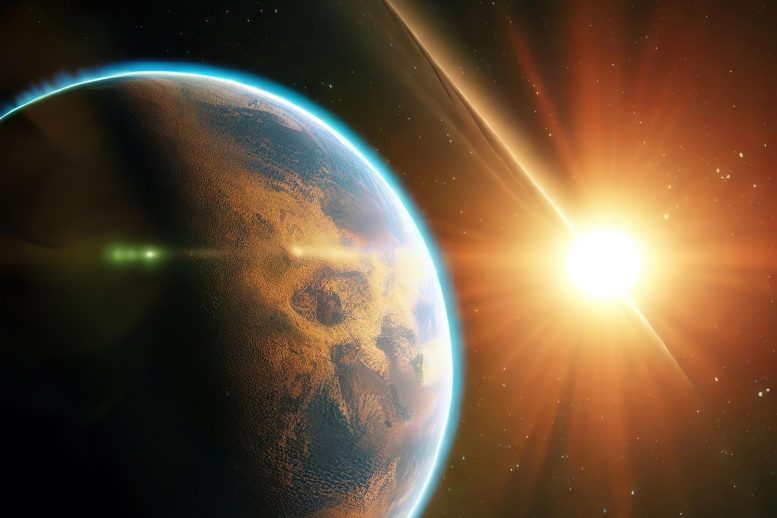
A new study suggests that one-third of the planets orbiting common dwarf stars in the Milky Way could potentially harbor life. Dwarf stars are the most common type of stars in the galaxy and billions of planets orbit them.
University of Florida astronomers find that hundreds of millions of planets orbiting dwarf stars in the Milky Way could potentially harbor life, occupying a ‘Goldilocks’ orbit that allows them to withstand extreme tidal forces and retain liquid water, according to data from NASA’s Kepler and Gaia telescopes.
Our familiar, warm, yellow sun is a relative rarity in the Milky Way. By far the most common stars are considerably smaller and cooler, sporting just half the mass of our sun at most. Billions of planets orbit these common dwarf stars in our galaxy.
To capture enough warmth to be habitable, these planets would need to huddle very close to their small stars, which leaves them susceptible to extreme tidal forces.
In a new analysis based on the latest telescope data, University of Florida astronomers have discovered that two-thirds of the planets around these ubiquitous small stars could be roasted by these tidal extremes, sterilizing them. But that leaves one-third of the planets – hundreds of millions across the galaxy – that could be in a Goldilocks orbit close enough, and gentle enough, to hold onto liquid water and possibly harbor life.
UF astronomy professor Sarah Ballard and doctoral student Sheila Sagear published their findings the week of May 29 in the Proceedings of the National Academy of Sciences. Ballard and Sagear have long studied exoplanets, those worlds that orbit stars other than the sun.
“I think this result is really important for the next decade of exoplanet research, because eyes are shifting toward this population of stars,” Sagear said. “These stars are excellent targets to look for small planets in an orbit where it’s conceivable that water might be liquid and therefore the planet might be habitable.”
Sagear and Ballard measured the eccentricity of a sample of more than 150 planets around these M dwarf stars, which are about the size of Jupiter. The more oval shaped an orbit, the more eccentric it is. If a planet orbits close enough to its star, at about the distance that Mercury orbits the sun, an eccentric orbit can subject it to a process known as tidal heating. As the planet is stretched and deformed by changing gravitational forces on its irregular orbit, friction heats it up. At the extreme end, this could bake the planet, removing all chance for liquid water.
“It’s only for these small stars that the zone of habitability is close enough for these tidal forces to be relevant,” Ballard said.
Data came from NASA’s Kepler telescope, which captures information about exoplanets as they move in front of their host stars. To measure the planets’ orbits, Ballard and Sagear focused especially on how long the planets took to move across the face of the stars. Their study also relied on new data from the Gaia telescope, which measured the distance to billions of stars in the galaxy.
“The distance is really the key piece of information we were missing before that allows us to do this analysis now,” Sagear said.
Sagear and Ballard found that stars with multiple planets were the most likely to have the kind of circular orbits that allow them to retain liquid water. Stars with only one planet were the most likely to see tidal extremes that would sterilize the surface.
Since one-third of the planets in this small sample had gentle enough orbits to potentially host liquid water, that likely means that the Milky Way has hundreds of millions of promising targets to probe for signs of life outside our solar system.
Reference: “The orbital eccentricity distribution of planets orbiting M dwarfs” 29 May 2023, Proceedings of the National Academy of Sciences.
DOI: 10.1073/pnas.2217398120

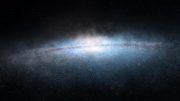
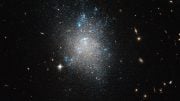
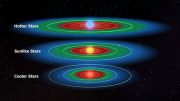
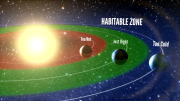

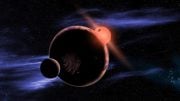
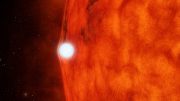

The conclusions about life is far too optimistic. It does not take into account the many known factors that prevent life from forming. Here is a last of at least 10 factors that would statistically narrow down the chances of finding microbial or animal-level life on a planet around an M-Type star:
Factors Calculation Explanation Remaining Stars/Planets
Factor 1 400 Billion Stars in the Mily Way 400 Billion
Factor 2 30% Stars outside the Deadly Bulge 120 billion
Factor 3. 30% Young Stars in outer regions 36 billion
Factor 4 75% M-type Stars 27 Billion
Factor 3 50% Type M Stars with planets 13.5 Billion
Factor 5 18% Rocky and in Goldilock zone. . 2.43 Billion
Factor 6 1% Planets that rotate 24.3 Million
Factor 7 1% Planets with a life-suitable atmosphere 243,000
Factor 8 10% Planets with enough water 24,300
Factor 9 50% Planets with microballife 12,150
Factor 10 0.1% Planets with animal-type life 12
Our Sun is a yellow dwarf, G2 Class, Main-Sequence star. It is estimated that such yellow dwarfs make up about 7% of all stars in our Galaxy. Thus, depending on who one talks to, there at least 14 Billion or up to 28 Billion or more solitary, Sun-like stars in the Milky Way Galaxy alone, and most such stars have planets.
“to be habitable, these planets would need to huddle very close to their small stars, which leaves them susceptible to extreme tidal forces.” That’s not all. They will be even more susceptible to their star’s DNA-damaging UV radiation. Search for oxygen and ozone after liquid water.
Realistically, we should be looking at the biggest M class stars through the smallest F class stars that are at least two billion years old for any signs of life – long enough that microbial life has had a substantial effect on the atmosphere which is the only way we would reasonably detect signs of extra-solar life at this stage of our technological development. We shouldn’t be looking at smaller red dwarf stars, tidal locking and flaring make them less suitable for the kind of life we know to look for. What we’re looking at isn’t just the most common stars, but the ones that make it easy to “see” their planets. That doesn’t coincide with the best candidates for life hosting planets.
Seems to me people are assuming an awful lot. Maybe there is something about a warm yellow sun necessary for the development of life. There would have to be several instances of the occurrence of life known to even begin an attempt at generalization.
Any E Reading website please tell me
So at least 12…
Ok… “So where is everybody?!” – Enrico Fermi